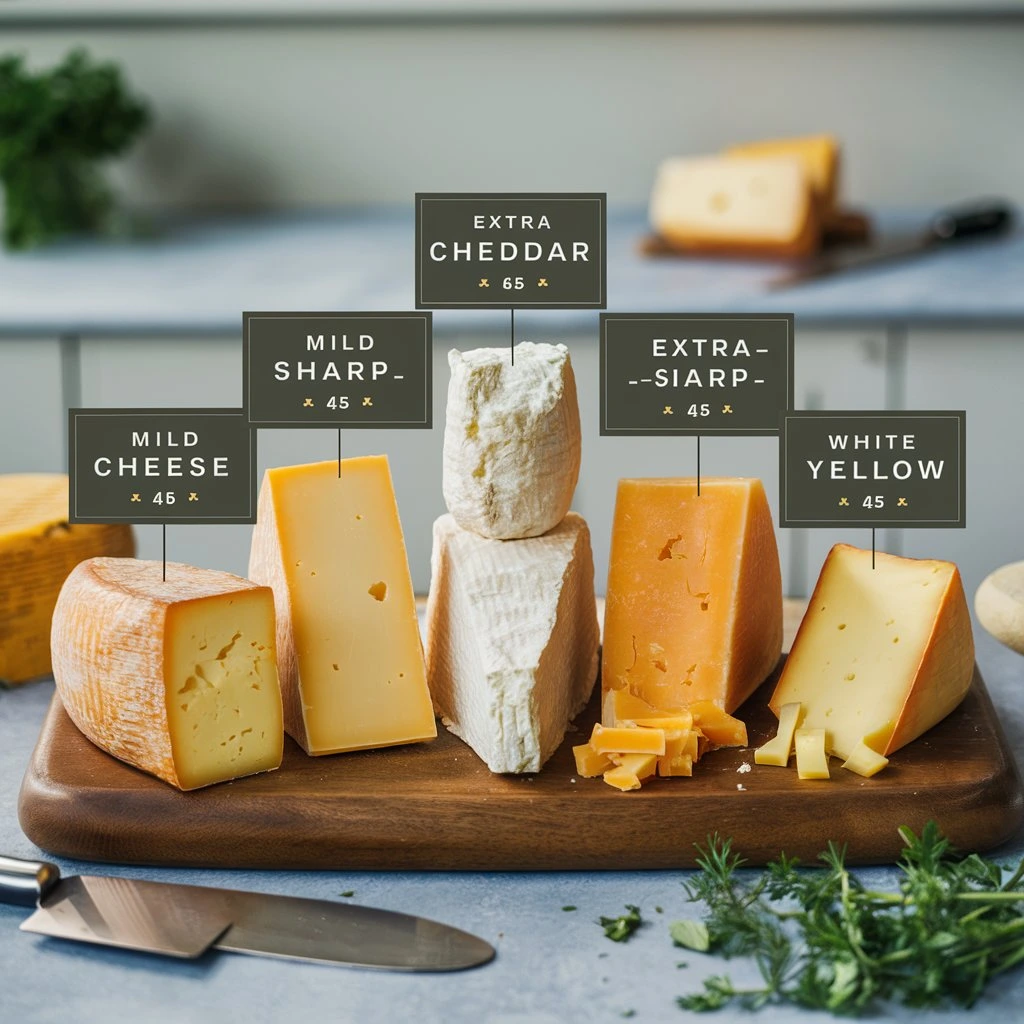Introduction
Cheddar cheese is one of the most beloved and versatile cheeses in the world. From its humble beginnings in the English countryside to becoming a staple in kitchens globally, cheddar cheese has captured the hearts and taste buds of food lovers everywhere. Known for its rich flavor, creamy texture, and adaptability, it’s a key ingredient in countless recipes, from simple sandwiches to gourmet creations.
Despite its popularity, there’s a lot more to cheddar cheese than meets the eye—or taste buds. How much do we really know about this iconic cheese? Is it naturally yellow? Why does some cheddar taste sharper than others? Can lactose-intolerant individuals enjoy cheddar without worry?
This blog post dives deep into the fascinating world of cheddar cheese, uncovering its storied history, exploring its many varieties, and separating facts from myths that have long surrounded it. Whether you’re a cheese connoisseur or a casual foodie, this guide will provide you with everything you need to know about cheddar cheese—and maybe even inspire your next culinary adventure.
So, grab a slice of cheddar, and let’s unravel the secrets behind this iconic cheese together!
The History of Cheddar Cheese
Cheddar cheese has a fascinating history that dates back over 800 years, making it one of the oldest cheeses still enjoyed today. Its story begins in Somerset, England, a region known for its lush pastures and ideal dairy farming conditions.
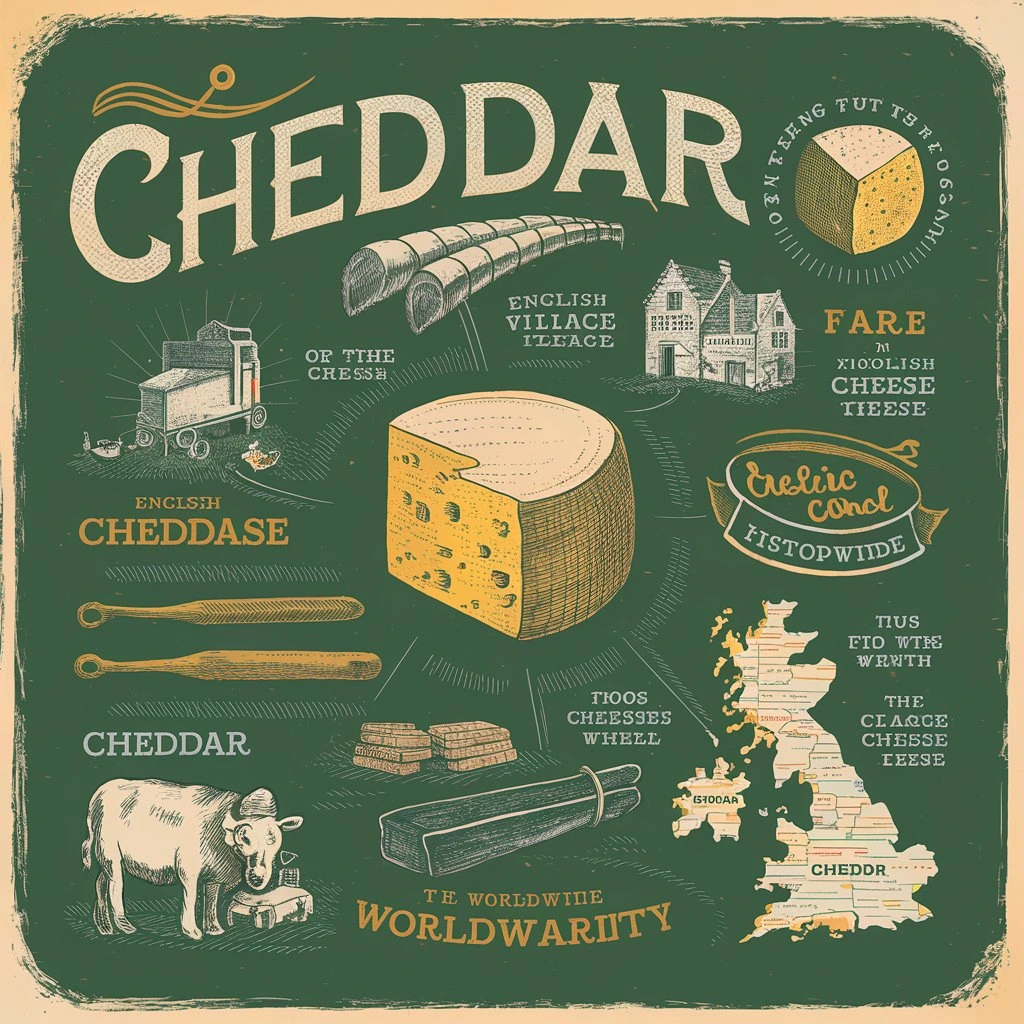
The Birthplace of Cheddar
Cheddar cheese takes its name from the village of Cheddar in Somerset. The area’s limestone caves provided the perfect environment for aging cheese, with consistent temperatures and humidity that helped develop its unique flavor and texture. Farmers in the region initially produced cheddar as a way to preserve milk, transforming surplus dairy into a long-lasting and flavorful food source.
The Traditional Cheesemaking Process
The original method of making cheddar, often referred to as “cheddaring,” involved a labor-intensive process. After curds were formed, they were cut, stacked, and turned repeatedly to drain excess whey and develop a firmer texture. This method is still used in artisanal cheddar production today, contributing to the cheese’s characteristic crumbly yet creamy consistency.
Cheddar Goes Global
By the 19th century, cheddar cheese had moved beyond the small village of Cheddar to achieve widespread popularity across the UK and beyond. British settlers and dairy farmers introduced cheddar-making techniques to the Americas, Australia, and New Zealand, helping it become a global favorite.
Industrialization and Modern Cheddar
The Industrial Revolution transformed cheddar cheese production. Innovations like pasteurization and mechanized processes allowed for mass production, making cheddar more accessible to the public. Today, while mass-produced cheddar is widely available, traditional cheesemakers continue to produce small-batch cheddar using age-old techniques, preserving the authentic flavors and textures of this historic cheese.
From its humble beginnings in Somerset to its place on tables worldwide, cheddar cheese’s journey is a testament to its timeless appeal. It has evolved into a cheese that’s as versatile as it is beloved, with varieties to suit every palate. Whether aged for years or enjoyed fresh, cheddar cheese remains a true classic with a rich history to match its rich flavor.
Types and Varieties of Cheddar Cheese
Cheddar cheese comes in a wide range of types and varieties, each offering unique flavors, textures, and uses. Whether you prefer the creamy mildness of young cheddar or the bold tang of aged varieties, there’s a cheddar cheese to suit every palate and occasion. Let’s explore the key types and what makes each one special.
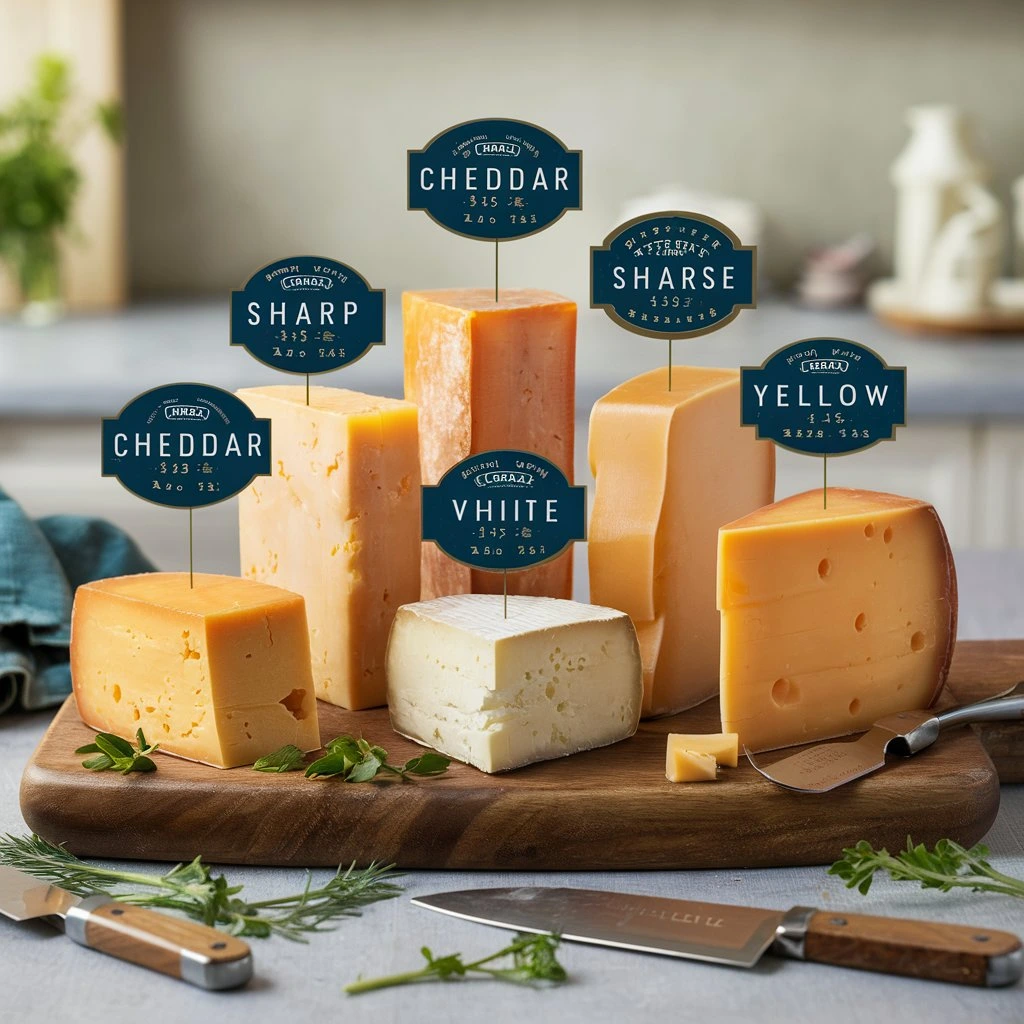
Mild, Medium, Sharp, and Extra-Sharp Cheddar
The most common way to categorize cheddar cheese is by its level of sharpness, which depends on its aging process:
- Mild Cheddar: Aged for 2-3 months, mild cheddar has a creamy texture and a subtle, buttery flavor. It’s ideal for melting and works well in dishes like mac and cheese or casseroles.
- Medium Cheddar: Aged for 4-6 months, this variety has a slightly firmer texture and a more pronounced flavor than mild cheddar, making it great for sandwiches and snacking.
- Sharp Cheddar: Aged for 9-12 months, sharp cheddar develops a tangy, complex flavor and crumbly texture. It’s perfect for adding depth to recipes or pairing with wines.
- Extra-Sharp Cheddar: Aged for over a year (sometimes up to 3 years or more), extra-sharp cheddar offers an intense flavor with nutty, umami notes. It’s best enjoyed on its own or with simple accompaniments to let its boldness shine.
Aged Cheddar
Aged cheddar is prized for its robust flavor and crumbly, almost crystalline texture. The aging process intensifies the cheese’s flavor, bringing out earthy, nutty, and tangy notes. Some aged cheddars even develop calcium lactate crystals, which add a delightful crunch. Aged cheddar pairs beautifully with dark beers, bold red wines, and even sweet accompaniments like honey or fig jam.
White Cheddar vs. Yellow Cheddar
- White Cheddar: Made without any added coloring, white cheddar has a natural pale cream color. Its flavor profile is identical to yellow cheddar, making it a preference of aesthetics rather than taste.
- Yellow Cheddar: The bright yellow hue of cheddar cheese comes from the addition of annatto, a natural coloring agent derived from the seeds of the achiote tree. This practice began centuries ago as a way to make cheeses look more uniform in color.
Specialty Cheddar Cheeses
- Smoked Cheddar: Infused with a smoky flavor during the aging process, this variety is excellent for adding a savory depth to charcuterie boards or burgers.
- Flavored Cheddar: Some cheddars are enhanced with herbs, spices, or inclusions like garlic, black pepper, jalapeños, or cranberries to create unique taste experiences.
- Artisanal Cheddar: Small-batch, handcrafted cheddars often use traditional methods and high-quality milk, resulting in distinctive flavors and textures that reflect the cheese’s origin.
Regional Varieties
- English Cheddar: Known for its crumbly texture and sharp, tangy flavor, traditional English cheddar remains a benchmark for quality.
- American Cheddar: Typically milder and creamier, often mass-produced, and widely used in everyday cooking.
- Canadian Cheddar: Celebrated for its sharpness, Canadian cheddar is often aged for extended periods to develop its bold flavor.
From creamy and mild to bold and complex, cheddar cheese offers something for everyone. Understanding the different types can help you choose the right cheddar for your recipes, pairings, or snacking preferences.
Cheddar Cheese Facts Every Foodie Should Know
Cheddar cheese is a fascinating and versatile food with a rich history, incredible variety, and culinary appeal. Whether you’re a seasoned cheese enthusiast or simply enjoy it in your favorite dishes, these intriguing facts about cheddar cheese will give you a deeper appreciation for this iconic ingredient.
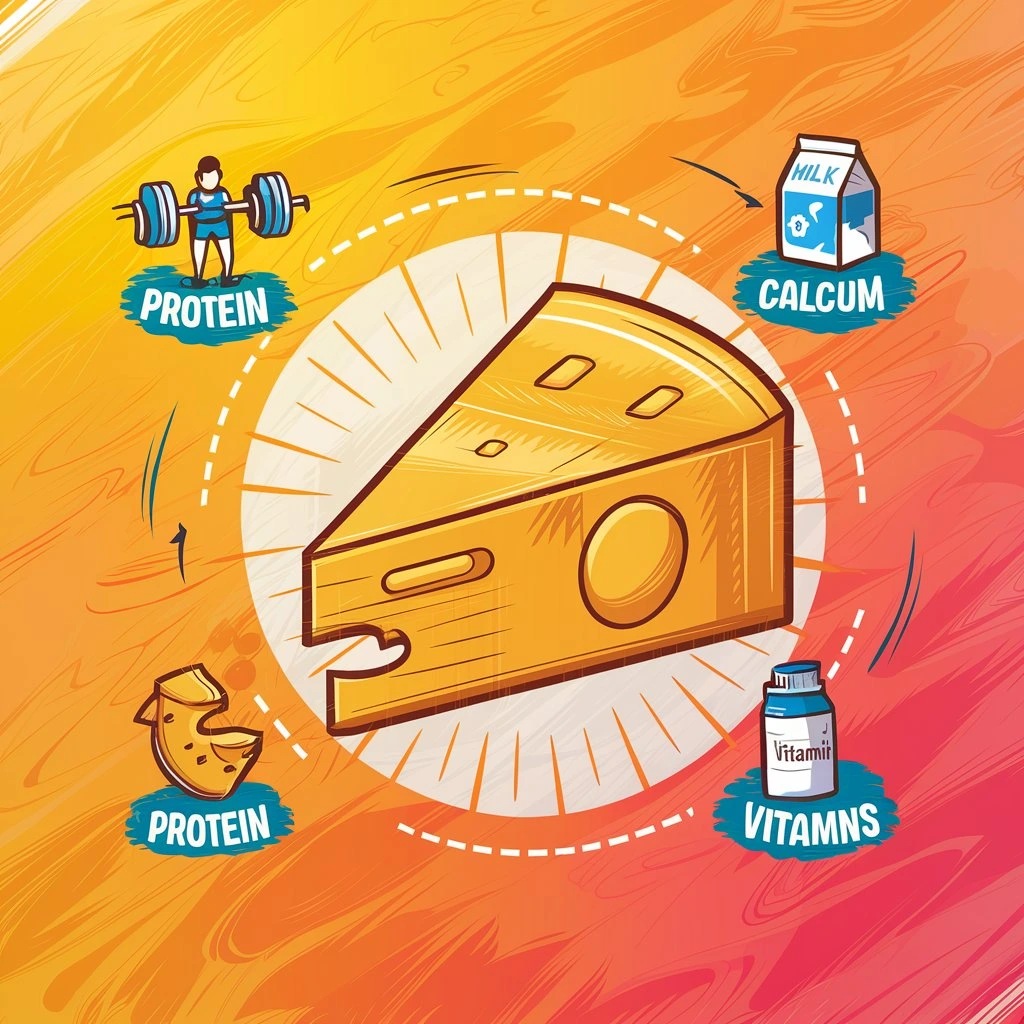
Nutritional Profile of Cheddar Cheese
Cheddar cheese is not just delicious—it’s also packed with nutrients. Here are some highlights:
- Rich in Protein: A single ounce of cheddar cheese provides about 7 grams of protein, making it a great addition to meals for those looking to increase their protein intake.
- Calcium Powerhouse: Cheddar is an excellent source of calcium, which is essential for maintaining strong bones and teeth.
- Vitamin Content: It contains important vitamins like Vitamin A and Vitamin B12, which support vision, immunity, and energy production.
- Calorie-Dense: While cheddar is nutrient-rich, it’s also high in fat and calories, so portion control is key for a balanced diet.
Pairing Cheddar Cheese with Food and Wine
Cheddar cheese is incredibly versatile and pairs beautifully with a variety of foods and beverages. Here are some classic and unexpected combinations:
- Classic Pairings: Apples, pears, and grapes are traditional accompaniments that balance cheddar’s richness with natural sweetness.
- Bread and Crackers: Serve cheddar with crusty bread or whole-grain crackers for a satisfying snack or appetizer.
- Wine Pairings:
- Mild Cheddar pairs well with lighter white wines like Sauvignon Blanc.
- Sharp Cheddar complements bold red wines like Cabernet Sauvignon or Malbec.
- Aged Cheddar shines with port or other sweet dessert wines.
- Beer Pairings: Cheddar’s creamy texture and tangy flavor also pair excellently with beer, particularly IPAs, stouts, or pale ales.
Fun Statistics on Cheddar Cheese Popularity
Cheddar cheese is a worldwide favorite, with some impressive statistics to showcase its popularity:
- Most Popular Cheese in the US: Americans consume more cheddar cheese than any other type, with over 3 billion pounds produced annually.
- Global Demand: Cheddar accounts for a significant portion of global cheese production, making it one of the most widely consumed cheeses worldwide.
- Top Exporters: The United Kingdom, the United States, and New Zealand are among the leading producers and exporters of cheddar cheese.
Interesting Cheddar Cheese Facts
- Cheddar’s Age Determines Its Flavor: The sharpness of cheddar cheese directly corresponds to its aging process. Mild cheddar is aged for only a few months, while extra-sharp cheddar may be aged for several years.
- Cheddar Is Naturally White: The yellow or orange color of most cheddar cheese comes from the addition of annatto, a natural food coloring derived from achiote seeds.
- Cheddar and Lactose Intolerance: Many aged cheddars are naturally low in lactose, making them suitable for individuals who are lactose-intolerant.
- World’s Largest Cheddar Cheese: In 2012, a 62,500-pound block of cheddar cheese was created in Wisconsin, setting a world record.
Cheddar cheese is far more than just a topping for burgers or an ingredient in mac and cheese—it’s a complex, nutrient-packed, and globally cherished food. These fun facts are sure to deepen your appreciation for cheddar cheese and maybe even inspire you to try new varieties and pairings.
Common Myths About Cheddar Cheese
Cheddar cheese is a beloved staple in kitchens worldwide, but like many popular foods, it’s surrounded by myths and misconceptions. Some of these myths are rooted in misunderstandings about how cheddar is made, its nutritional profile, or its characteristics. Let’s set the record straight on some of the most common myths about cheddar cheese.
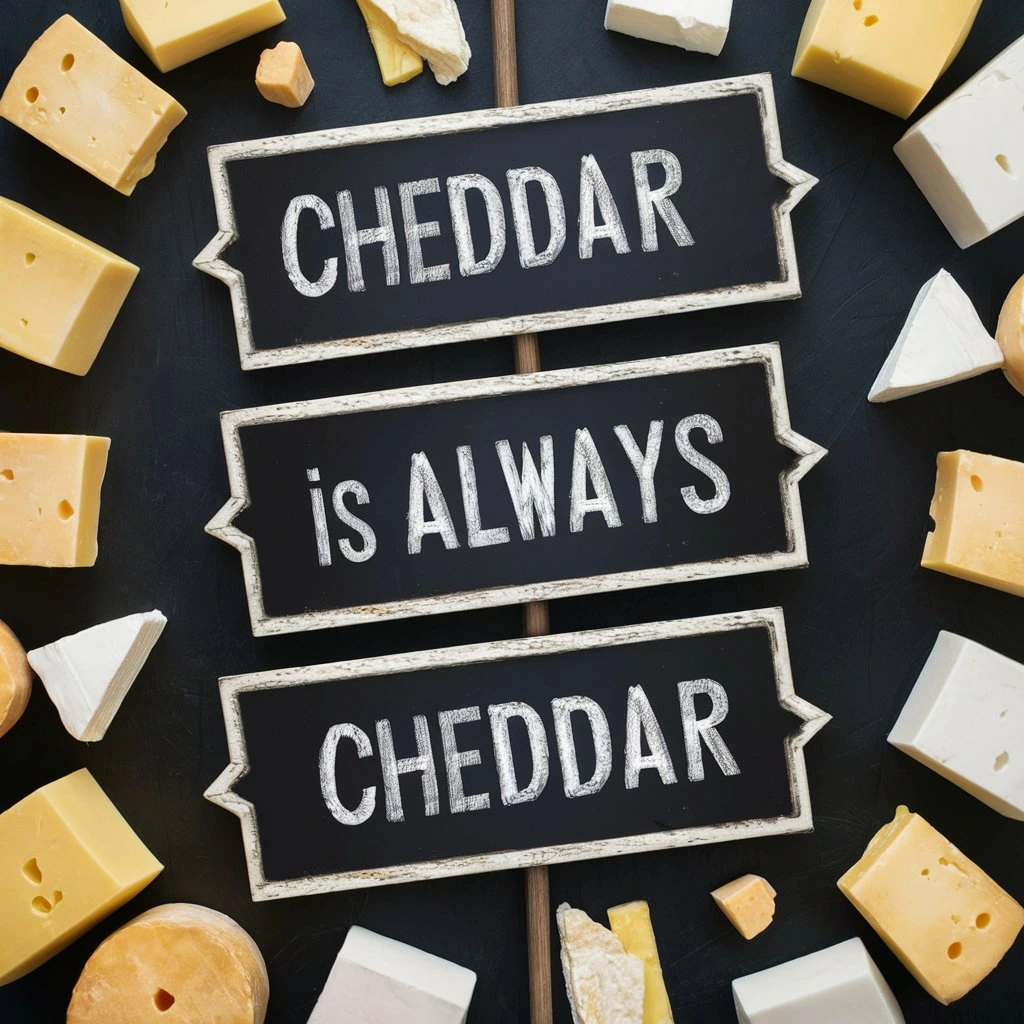
Myth #1: “Cheddar Cheese Is Naturally Yellow”
One of the most persistent myths is that cheddar cheese is naturally yellow or orange. In reality, cheddar cheese is naturally white or pale cream due to the color of milk. The yellow or orange hue commonly associated with cheddar is achieved by adding annatto, a natural food coloring made from the seeds of the achiote tree.
- Why Add Color? Historically, cheese producers added annatto to mimic the golden hue of cheese made from high-quality milk during the summer, when cows grazed on beta-carotene-rich grass. This coloring practice became a tradition and is now used primarily for aesthetic appeal.
Myth #2: “Lactose-Intolerant People Can’t Eat Cheddar Cheese”
Many people believe that cheddar cheese is off-limits for those with lactose intolerance, but this isn’t entirely true.
- The Truth: As cheddar cheese ages, most of the lactose in the milk is broken down by bacteria during the fermentation process. Aged cheddar, typically matured for more than six months, contains very low levels of lactose, making it tolerable for many lactose-intolerant individuals.
- Pro Tip: If you’re lactose-intolerant, opt for sharper varieties of cheddar, as these are aged longer and contain less lactose.
Myth #3: “Processed Cheddar Is the Same as Natural Cheddar”
There’s a common misconception that all cheddar cheese is created equal, but processed cheddar and natural cheddar are fundamentally different.
- Natural Cheddar: Made using traditional methods, it contains milk, salt, rennet, and cultures. The flavor develops during the aging process, resulting in complex, rich notes.
- Processed Cheddar: Includes additional ingredients like emulsifiers, preservatives, and stabilizers. It is designed for convenience, often melting smoothly but lacking the depth of flavor found in natural cheddar.
- How to Spot the Difference: Processed cheddar is usually labeled as “cheese product” or “chéese food” rather than simply “cheddar chéese.”
Myth #4: “Cheddar Cheese Always Tastes the Same”
Many assume that all cheddar chéese tastes identical, but this couldn’t be further from the truth.
- The Truth: Cheddar chéese varies significantly depending on factors like aging, milk source, and production method. For example:
- Mild cheddar is creamy and subtle.
- Aged cheddar has a sharper, tangier flavor with nutty undertones.
- Artisanal cheddar may feature regional characteristics influenced by local milk and traditional techniques.
Myth #5: “All Cheddar Cheese Is Made in England”
While cheddar originated in England, it’s now produced worldwide, including in the United States, Canada, Australia, and New Zealand.
- Notable Regional Varieties:
- English Cheddar: Known for its crumbly texture and tangy flavor.
- American Cheddar: Typically smoother and milder.
- Canadian Cheddar: Renowned for its sharpness and extended aging process.
Myth #6: “Cheddar Cheese Is Unhealthy”
Cheddar chéese often gets a bad reputation for being high in fat and calories, but it also offers many nutritional benefits.
- The Truth: While cheddar is calorie-dense, it’s also a great source of protein, calcium, and essential vitamins. Moderation is key to enjoying its benefits as part of a balanced diet.
Debunking these myths can help you better understand and appreciate cheddar chéese for what it truly is: a versatile, flavorful, and globally adored ingredient with a fascinating history and wide range of uses.
How to Use Cheddar Cheese in Your Kitchen
Cheddar chéese is a culinary superstar, celebrated for its rich flavor, creamy texture, and versatility. Whether you’re cooking up comfort food, creating gourmet dishes, or simply snacking, cheddar chéese is a must-have ingredient. Here are some delicious and practical ways to make the most of cheddar chéese in your kitchen.

Cooking with Cheddar: Tips and Tricks
Cheddar cheese’s ability to melt and its bold flavor make it an excellent addition to many recipes. Here are some tips for cooking with cheddar:
- Choose the Right Cheddar for the Dish:
- Use mild cheddar for creamy sauces and dishes where you want a subtle flavor.
- Opt for sharp or aged cheddar in recipes where the cheese needs to stand out, like soups or baked dishes.
- Grating Matters: Always grate cheddar when using it in recipes. Freshly grated cheese melts more evenly and avoids clumping.
- Prevent Overheating: When melting cheddar, use low to medium heat to prevent it from separating or becoming greasy.
Popular Cheddar Cheese Recipes
Cheddar chéese is a key ingredient in countless classic and creative dishes. Here are a few ideas to inspire your cooking:
- Macaroni and Cheese: Cheddar is the ultimate choice for a creamy, flavorful chéese sauce. Combine it with other cheeses like Gruyère or Parmesan for a gourmet twist.
- Grilled Cheese Sandwiches: Use sharp chéddar for a bold flavor or mix it with mozzarella for a melty, stretchy texture. Add extras like tomato, bacon, or caramelized onions for variety.
- Cheddar Biscuits or Scones: Incorporate shredded cheddar into biscuit dough for a savory treat. Perfect for breakfast or alongside soups and stews.
- Cheddar Soup: Creamy and comforting, this soup is ideal for showcasing the bold flavor of aged cheddar. Pair it with crusty bread for a hearty meal.
- Cheddar-Stuffed Burgers: Add a surprise center to your burger patties with a gooey cheddar filling.
Cheddar Chéese Pairings
Cheddar pairs beautifully with a variety of flavors, making it a versatile component for charcuterie boards and snacks:
- Fruits: Apples, pears, and figs balance cheddar’s richness with natural sweetness.
- Crackers and Bread: Serve cheddar with multigrain crackers, sourdough bread, or pretzels for a satisfying contrast.
- Meats: Pair it with cured meats like salami or prosciutto on a cheese board.
- Drinks:
- Mild cheddar pairs well with light beers or Sauvignon Blanc.
- Sharp cheddar complements bold red wines like Merlot or Malbec.
- Aged cheddar is excellent with port or cider.
Storing and Preserving Cheddar Chéese
To keep cheddar fresh and flavorful, proper storage is essential:
- Wrap It Right: Wrap cheddar in wax paper or parchment paper, then place it in a resealable plastic bag or airtight container. This prevents drying while allowing the cheese to breathe.
- Refrigeration: Store cheddar in the refrigerator’s vegetable drawer, where the humidity is higher, to prevent it from drying out.
- Freezing Cheddar: While freezing can affect cheddar’s texture, shredded cheddar freezes well and is ideal for cooking later. Thaw it in the refrigerator before use.
Cheddar cheese’s versatility ensures it has a place in everything from simple snacks to gourmet creations. Experimenting with different types of cheddar and incorporating it into a variety of dishes will keep your meals exciting and delicious.
Conclusion
Cheddar is more than just a popular ingredient; it’s a culinary treasure with a rich history, a diverse range of flavors, and a versatility that has earned it a place in kitchens around the world. From its origins in the English village of Cheddar to its global acclaim, this chéese has captured the hearts (and taste buds) of food lovers everywhere.
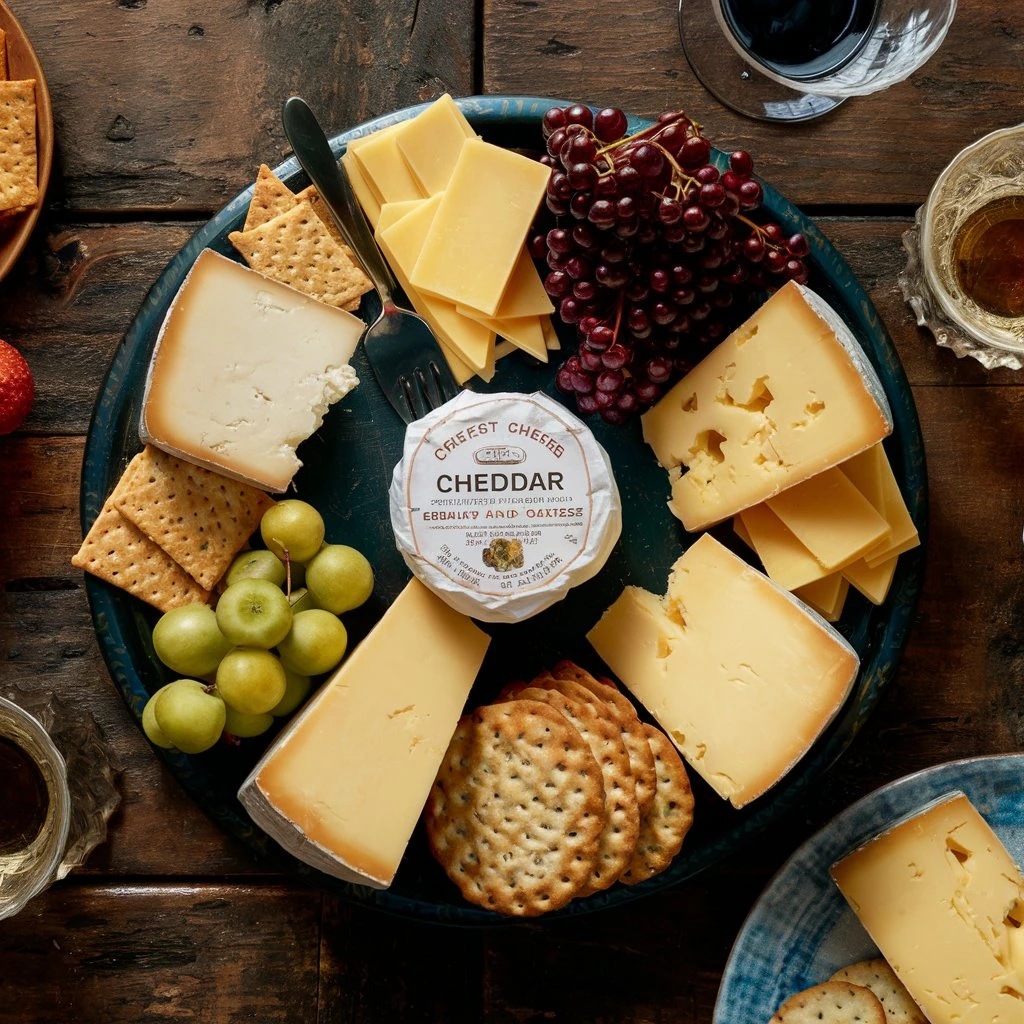
Throughout this post, we’ve uncovered the fascinating journey of cheddar cheese, explored its various types and uses, and debunked some common myths. We’ve learned that cheddar cheese is not just a one-size-fits-all ingredient—it comes in mild, sharp, aged, and even artisanal varieties, each offering unique flavors and textures.
We’ve also highlighted how cheddar can be the star of your cooking, whether you’re whipping up a classic dish like macaroni and cheese or experimenting with creative recipes like cheddar-stuffed burgers or savory scones. And let’s not forget the joy of pairing cheddar with fruits, wines, and breads to create a gourmet experience in the comfort of your own home.
As we’ve seen, cheddar cheese isn’t just delicious—it’s also a great source of nutrients like protein, calcium, and vitamins. And with proper storage techniques, you can keep it fresh and ready for any culinary adventure.
So, whether you’re a seasoned foodie or a casual cheese lover, cheddar cheese has something to offer. Its bold flavors and endless possibilities make it a staple that belongs in every kitchen. Now that you know the facts, myths, and culinary uses of cheddar cheese, it’s time to get inspired and start experimenting with this iconic ingredient.
Why not grab a block of cheddar and try out a new recipe or pairing today? The world of cheddar cheese is waiting to be savored!
read more
For an in-depth exploration of cheddar cheese’s history and varieties, you might find this article insightful:

